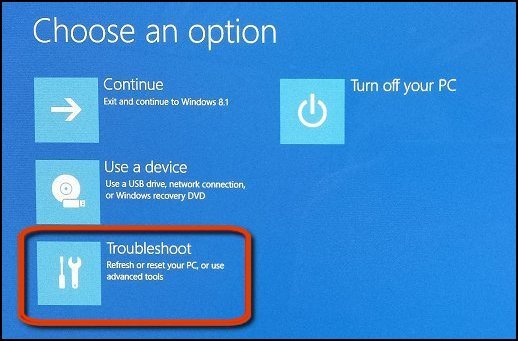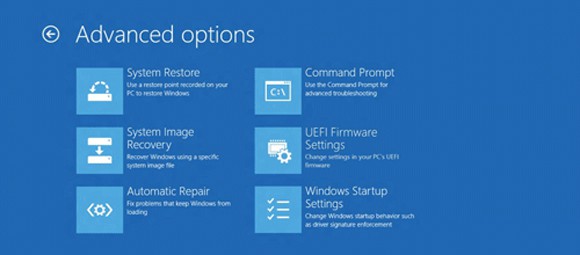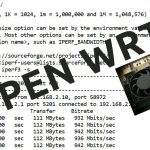Where did BIOS [UEFI] Setup Go in Windows 8.1 and Windows 10?
Where did BIOS [UEFI] Setup Go in Windows 8.1 and Windows 10?
Kali.org recently released version 2.0 of Kali Linux which Mike Danseglio like to demonstrate in our Security+ and Certified Ethical Hacking CEHv9 courses. Kali Linux easily fits onto a 32GB USB 3.0 drive and allows you to boot directly into an extremely powerful security (hacking?) system.
Mike quickly updated my Patriot USB stick for me, and I raced to test it on my laptop.
…and the USB stick was not recognized at boot. (Insert frowning emoticon here).
What changed? It worked recently. Ah yes, I upgraded my laptop to Windows 10 for evaluation purposes. Might this be a cause? It turns out that in part, it was. After a little bit of research, I discovered that the symptoms are identical on Windows 8/8.1.
Once you implement Fast Boot in either Windows 8/8.1 or Windows 10, it becomes (almost) impossible to enter BIOS or UEFI setup.
I researched Lenovo keyboard options for entering BIOS/UEFI at power-on. BIOS/CMOS Setup suggest F1 on one model and Fn-F2 on the other. Both were supposed to accommodate the F12 key for an alternate Boot Menu. None of the combinations worked.
A little extra research yielded the following information from a Lenovo site.
After shutting down the Microsoft Windows 8/8.1 PC and turning the system back on, it is not possible to enter BIOS Setup (by pressing F1) or the Boot Menu (by pressing F12).
The above symptom is associated with, but not limited to, the following systems:
- ThinkPad, ThinkCentre, ThinkStation, IdeaPad, IdeaCentre
Affected Systems (machine types, model types):
- All models with Microsoft Windows 8/8.1 preload.
System is configured with:
- Microsoft Windows 8/8.1 (and I discovered Windows 10 as well)
By default, a Windows 8/8.1 shutdown is not a real shutdown. Instead, it is hybrid shutdown where contents of memory are saved to disk. This allows for a faster startup. However, turning on the PC after a hybrid shutdown does not allow for pressing F1 or F12 during startup.
There are several ways to enter Setup Utility (F1) or the Boot Menu (F12) on a Microsoft Windows 8/8.1 PC as explained below:
- Press and hold the Shift key while selecting the Shutdown option in Windows 8. This will make the PC perform a full shutdown instead of a hybrid shutdown. Then F1 or F12 can be pressed successfully during startup.
- Select Restart instead of Shutdown. Then F1 or F12 can be pressed successfully during startup.
- Disable the fast startup option in Control Panel -> Hardware and Sound -> Power Options -> Choose what the power buttons do.
These options didn’t work for me. I just could not get the keystrokes recognized fast enough. Not by holding them down, or poising to pounce on them at the appropriate splash screen.
Here is the solution that you should be using on faster machines, particularly for Windows 10 which boots remarkably faster than Windows 8/8.1.
Use the Windows 8/8.1 or Windows 10 setup utilities:
1. Open the Charm Bar
2. Click on Settings
3. Click on Change PC Settings or All Settings (Windows 10)
4. Navigate through the setup screens to Recovery and click on Advanced Startup >> Restart Now
You will be rebooted into the RE environment. (Make sure you have saved and closed all your work before experimenting.)
5. Click on Troubleshoot
6. Click on Advanced Options
7. Click on UEFI Firmware Settings
8. Click on Restart
Once you click on restart, your system will be rebooted into the CMOS setup/UEFI interface where you may change your settings, including the device boot sequence, recognition of legacy boot devices, fast boot mode or other elements that will enable you to boot to alternate devices.
Et Voila! I was able to alter the boot sequence and recognize my Kali USB boot device.
I look forward to seeing you in the classroom, or online!
Steven Fullmer
Interface Technical Training Staff Instructor
Steve teaches PMP: Project Management Fundamentals and Professional Certification, Windows 7, Windows 8.1 and CompTIA classes in Phoenix, Arizona.
You May Also Like
BIOS, BIOS [UEFI] Setup, boot settings, CMOS, Kali, Kali Linux, UEFI, UEFI Firmware, USB boot
A Simple Introduction to Cisco CML2
0 3901 0Mark Jacob, Cisco Instructor, presents an introduction to Cisco Modeling Labs 2.0 or CML2.0, an upgrade to Cisco’s VIRL Personal Edition. Mark demonstrates Terminal Emulator access to console, as well as console access from within the CML2.0 product. Hello, I’m Mark Jacob, a Cisco Instructor and Network Instructor at Interface Technical Training. I’ve been using … Continue reading A Simple Introduction to Cisco CML2
Creating Dynamic DNS in Network Environments
0 645 1This content is from our CompTIA Network + Video Certification Training Course. Start training today! In this video, CompTIA Network + instructor Rick Trader teaches how to create Dynamic DNS zones in Network Environments. Video Transcription: Now that we’ve installed DNS, we’ve created our DNS zones, the next step is now, how do we produce those … Continue reading Creating Dynamic DNS in Network Environments
Cable Testers and How to Use them in Network Environments
0 731 1This content is from our CompTIA Network + Video Certification Training Course. Start training today! In this video, CompTIA Network + instructor Rick Trader demonstrates how to use cable testers in network environments. Let’s look at some tools that we can use to test our different cables in our environment. Cable Testers Properly Wired Connectivity … Continue reading Cable Testers and How to Use them in Network Environments






